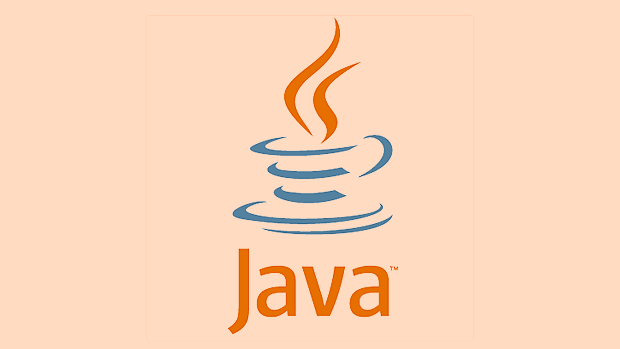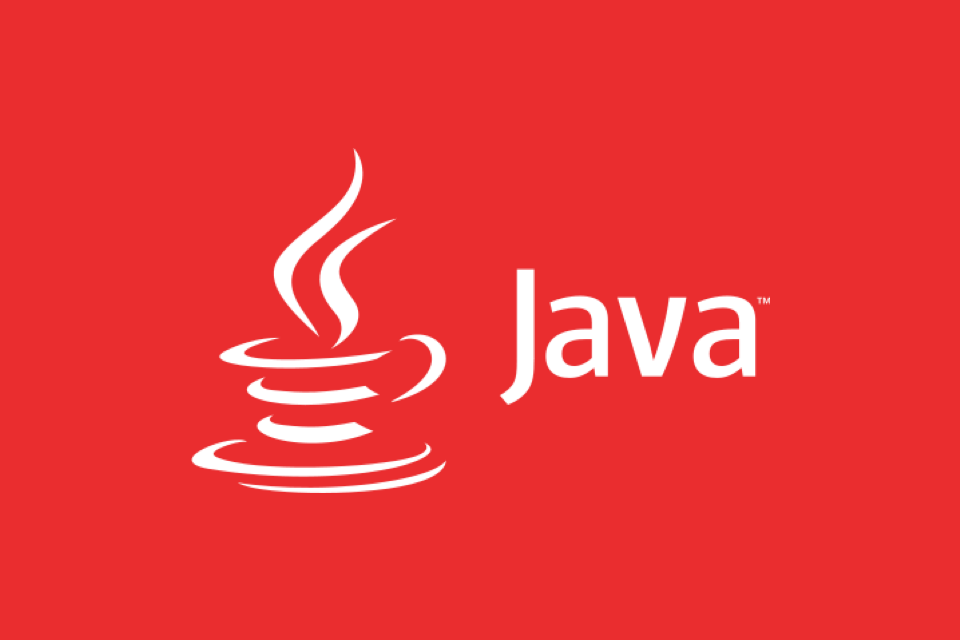Implementing a Caching Layer in a Java Application with Redis
Jul 30, 2025 am 03:30 AMRedis is used for caching in Java applications to improve performance by reducing database load and enabling fast data retrieval. 1. Install Redis using Docker: docker run -d -p 6379:6379 redis. 2. Add spring-boot-starter-data-redis and lettuce-core dependencies in pom.xml. 3. Configure Redis connection in application.yml with host, port, and pool settings. 4. Create a RedisConfig class with @EnableCaching, customize RedisTemplate for JSON serialization using GenericJackson2JsonRedisSerializer. 5. Use @Cacheable to retrieve from cache or execute and cache, @CachePut to update cache after execution, and @CacheEvict to remove cached data. 6. Define RedisCacheManager bean with entryTtl(Duration.ofMinutes(10)) to set 10-minute expiration. 7. Monitor cache using redis-cli commands like KEYS * and GET "users::1". 8. Write unit tests to validate cache hits and misses. Best practices include using meaningful keys, avoiding large or sensitive data in cache, handling cache misses gracefully, and optionally warming cache at startup. This integration with Spring Boot simplifies caching implementation while significantly improving application performance and scalability.

Adding a caching layer to a Java application using Redis can significantly improve performance by reducing database load and speeding up data retrieval. Here’s how to implement it effectively.

Why Use Redis for Caching?
Redis is an in-memory data store known for its speed, flexibility, and support for various data structures. It's ideal for caching because:
- Data is stored in RAM, enabling sub-millisecond read/write operations.
- It supports expiration (TTL), which helps manage stale data.
- It integrates well with Java via clients like Lettuce and Jedis.
Step 1: Set Up Redis and Dependencies
First, make sure Redis is running. You can install it locally or use Docker:

docker run -d -p 6379:6379 redis
Then, add the required dependencies to your pom.xml (for Maven):
<dependency>
<groupId>org.springframework.boot</groupId>
<artifactId>spring-boot-starter-data-redis</artifactId>
</dependency>
<dependency>
<groupId>io.lettuce</groupId>
<artifactId>lettuce-core</artifactId>
</dependency>Lettuce is the recommended Redis client for Spring Boot due to its async and non-blocking capabilities.

Step 2: Configure Redis in Spring Boot
In application.yml or application.properties, configure the Redis connection:
spring:
redis:
host: localhost
port: 6379
lettuce:
pool:
max-active: 8
max-idle: 8
min-idle: 0You can also customize the RedisConnectionFactory and RedisTemplate if needed:
@Configuration
@EnableCaching
public class RedisConfig {
@Bean
public RedisTemplate<String, Object> redisTemplate(RedisConnectionFactory connectionFactory) {
RedisTemplate<String, Object> template = new RedisTemplate<>();
template.setConnectionFactory(connectionFactory);
template.setKeySerializer(new StringRedisSerializer());
template.setValueSerializer(new GenericJackson2JsonRedisSerializer());
return template;
}
}Using GenericJackson2JsonRedisSerializer allows complex Java objects to be serialized to JSON and stored in Redis.
Step 3: Enable and Use Caching Annotations
Annotate your main application class or a config class with @EnableCaching.
@SpringBootApplication
@EnableCaching
public class Application {
public static void main(String[] args) {
SpringApplication.run(Application.class, args);
}
}Now use caching annotations in your service layer:
@Service
public class UserService {
@Autowired
private UserRepository userRepository;
@Cacheable(value = "users", key = "#id")
public User getUserById(Long id) {
System.out.println("Fetching user from DB: " id);
return userRepository.findById(id).orElse(null);
}
@CachePut(value = "users", key = "#user.id")
public User updateUser(User user) {
return userRepository.save(user);
}
@CacheEvict(value = "users", key = "#id")
public void deleteUser(Long id) {
userRepository.deleteById(id);
}
}@Cacheable: Checks the cache first. If present, returns cached value; otherwise, executes the method and caches the result.@CachePut: Always executes the method and updates the cache.@CacheEvict: Removes the entry from the cache (useful for delete operations).
Step 4: Handle Cache Expiration and Eviction
Set TTL (Time-To-Live) to avoid stale data. You can define it globally in configuration:
@Bean
public RedisCacheManager cacheManager(RedisConnectionFactory connectionFactory) {
RedisCacheConfiguration config = RedisCacheConfiguration.defaultCacheConfig()
.entryTtl(Duration.ofMinutes(10)) // Cache expires after 10 minutes
.serializeKeysWith(RedisSerializationContext.SerializationPair.fromSerializer(new StringRedisSerializer()))
.serializeValuesWith(RedisSerializationContext.SerializationPair.fromSerializer(new GenericJackson2JsonRedisSerializer()));
return RedisCacheManager.builder(connectionFactory)
.cacheDefaults(config)
.build();
}This ensures cached users are automatically removed after 10 minutes.
Step 5: Monitor and Test the Cache
Use Redis CLI to inspect cached data:
redis-cli > KEYS * > GET "users::1"
Also, write unit tests to verify caching behavior:
@Test
void shouldCacheUserOnFirstCall() {
userService.getUserById(1L); // DB hit
userService.getUserById(1L); // Should be cached
// Verify DB is called only once
}Use tools like Spring's CacheManager or logging to confirm hits/misses.
Best Practices
-
Use meaningful cache keys: Prefer
@Cacheable(value = "users", key = "#id")over complex or long keys. - Avoid caching large or sensitive data: Keep cache lightweight and secure.
- Plan for cache misses: Your app should still work if Redis is down or data isn’t cached.
- Use cache warming for critical data during startup if needed.
Basically, integrating Redis as a caching layer in Java (especially with Spring Boot) is straightforward and delivers immediate performance gains. With proper configuration and smart use of annotations, you can reduce latency and database pressure without complicating your code.
The above is the detailed content of Implementing a Caching Layer in a Java Application with Redis. For more information, please follow other related articles on the PHP Chinese website!

Hot AI Tools

Undress AI Tool
Undress images for free

Undresser.AI Undress
AI-powered app for creating realistic nude photos

AI Clothes Remover
Online AI tool for removing clothes from photos.

Clothoff.io
AI clothes remover

Video Face Swap
Swap faces in any video effortlessly with our completely free AI face swap tool!

Hot Article

Hot Tools

Notepad++7.3.1
Easy-to-use and free code editor

SublimeText3 Chinese version
Chinese version, very easy to use

Zend Studio 13.0.1
Powerful PHP integrated development environment

Dreamweaver CS6
Visual web development tools

SublimeText3 Mac version
God-level code editing software (SublimeText3)
 Asynchronous Programming Techniques in Modern Java
Jul 07, 2025 am 02:24 AM
Asynchronous Programming Techniques in Modern Java
Jul 07, 2025 am 02:24 AM
Java supports asynchronous programming including the use of CompletableFuture, responsive streams (such as ProjectReactor), and virtual threads in Java19. 1.CompletableFuture improves code readability and maintenance through chain calls, and supports task orchestration and exception handling; 2. ProjectReactor provides Mono and Flux types to implement responsive programming, with backpressure mechanism and rich operators; 3. Virtual threads reduce concurrency costs, are suitable for I/O-intensive tasks, and are lighter and easier to expand than traditional platform threads. Each method has applicable scenarios, and appropriate tools should be selected according to your needs and mixed models should be avoided to maintain simplicity
 Best Practices for Using Enums in Java
Jul 07, 2025 am 02:35 AM
Best Practices for Using Enums in Java
Jul 07, 2025 am 02:35 AM
In Java, enums are suitable for representing fixed constant sets. Best practices include: 1. Use enum to represent fixed state or options to improve type safety and readability; 2. Add properties and methods to enums to enhance flexibility, such as defining fields, constructors, helper methods, etc.; 3. Use EnumMap and EnumSet to improve performance and type safety because they are more efficient based on arrays; 4. Avoid abuse of enums, such as dynamic values, frequent changes or complex logic scenarios, which should be replaced by other methods. Correct use of enum can improve code quality and reduce errors, but you need to pay attention to its applicable boundaries.
 Understanding Java NIO and Its Advantages
Jul 08, 2025 am 02:55 AM
Understanding Java NIO and Its Advantages
Jul 08, 2025 am 02:55 AM
JavaNIO is a new IOAPI introduced by Java 1.4. 1) is aimed at buffers and channels, 2) contains Buffer, Channel and Selector core components, 3) supports non-blocking mode, and 4) handles concurrent connections more efficiently than traditional IO. Its advantages are reflected in: 1) Non-blocking IO reduces thread overhead, 2) Buffer improves data transmission efficiency, 3) Selector realizes multiplexing, and 4) Memory mapping speeds up file reading and writing. Note when using: 1) The flip/clear operation of the Buffer is easy to be confused, 2) Incomplete data needs to be processed manually without blocking, 3) Selector registration must be canceled in time, 4) NIO is not suitable for all scenarios.
 How Java ClassLoaders Work Internally
Jul 06, 2025 am 02:53 AM
How Java ClassLoaders Work Internally
Jul 06, 2025 am 02:53 AM
Java's class loading mechanism is implemented through ClassLoader, and its core workflow is divided into three stages: loading, linking and initialization. During the loading phase, ClassLoader dynamically reads the bytecode of the class and creates Class objects; links include verifying the correctness of the class, allocating memory to static variables, and parsing symbol references; initialization performs static code blocks and static variable assignments. Class loading adopts the parent delegation model, and prioritizes the parent class loader to find classes, and try Bootstrap, Extension, and ApplicationClassLoader in turn to ensure that the core class library is safe and avoids duplicate loading. Developers can customize ClassLoader, such as URLClassL
 Handling Common Java Exceptions Effectively
Jul 05, 2025 am 02:35 AM
Handling Common Java Exceptions Effectively
Jul 05, 2025 am 02:35 AM
The key to Java exception handling is to distinguish between checked and unchecked exceptions and use try-catch, finally and logging reasonably. 1. Checked exceptions such as IOException need to be forced to handle, which is suitable for expected external problems; 2. Unchecked exceptions such as NullPointerException are usually caused by program logic errors and are runtime errors; 3. When catching exceptions, they should be specific and clear to avoid general capture of Exception; 4. It is recommended to use try-with-resources to automatically close resources to reduce manual cleaning of code; 5. In exception handling, detailed information should be recorded in combination with log frameworks to facilitate later
 How does a HashMap work internally in Java?
Jul 15, 2025 am 03:10 AM
How does a HashMap work internally in Java?
Jul 15, 2025 am 03:10 AM
HashMap implements key-value pair storage through hash tables in Java, and its core lies in quickly positioning data locations. 1. First use the hashCode() method of the key to generate a hash value and convert it into an array index through bit operations; 2. Different objects may generate the same hash value, resulting in conflicts. At this time, the node is mounted in the form of a linked list. After JDK8, the linked list is too long (default length 8) and it will be converted to a red and black tree to improve efficiency; 3. When using a custom class as a key, the equals() and hashCode() methods must be rewritten; 4. HashMap dynamically expands capacity. When the number of elements exceeds the capacity and multiplies by the load factor (default 0.75), expand and rehash; 5. HashMap is not thread-safe, and Concu should be used in multithreaded
 Explained: Java Polymorphism in Object-Oriented Programming
Jul 05, 2025 am 02:52 AM
Explained: Java Polymorphism in Object-Oriented Programming
Jul 05, 2025 am 02:52 AM
Polymorphism is one of the core features of Java object-oriented programming. Its core lies in "one interface, multiple implementations". It implements a unified interface to handle the behavior of different objects through inheritance, method rewriting and upward transformation. 1. Polymorphism allows the parent class to refer to subclass objects, and the corresponding methods are called according to the actual object during runtime; 2. The implementation needs to meet the three conditions of inheritance relationship, method rewriting and upward transformation; 3. It is often used to uniformly handle different subclass objects, collection storage and framework design; 4. When used, only the methods defined by the parent class can be called. New methods added to subclasses need to be transformed downward and accessed, and pay attention to type safety.
 Effective Use of Java Enums and Best Practices
Jul 07, 2025 am 02:43 AM
Effective Use of Java Enums and Best Practices
Jul 07, 2025 am 02:43 AM
Java enumerations not only represent constants, but can also encapsulate behavior, carry data, and implement interfaces. 1. Enumeration is a class used to define fixed instances, such as week and state, which is safer than strings or integers; 2. It can carry data and methods, such as passing values ??through constructors and providing access methods; 3. It can use switch to handle different logics, with clear structure; 4. It can implement interfaces or abstract methods to make differentiated behaviors of different enumeration values; 5. Pay attention to avoid abuse, hard-code comparison, dependence on ordinal values, and reasonably naming and serialization.






